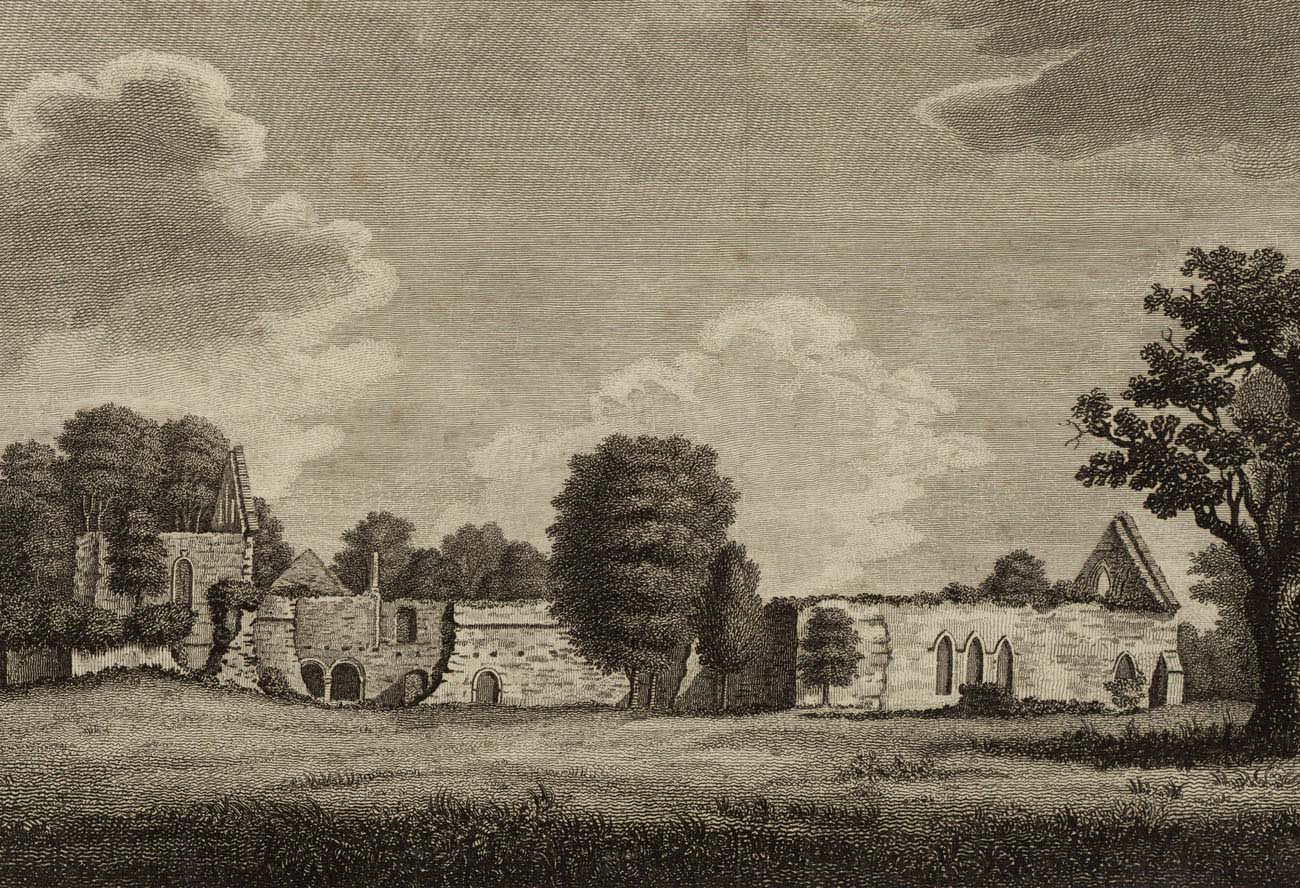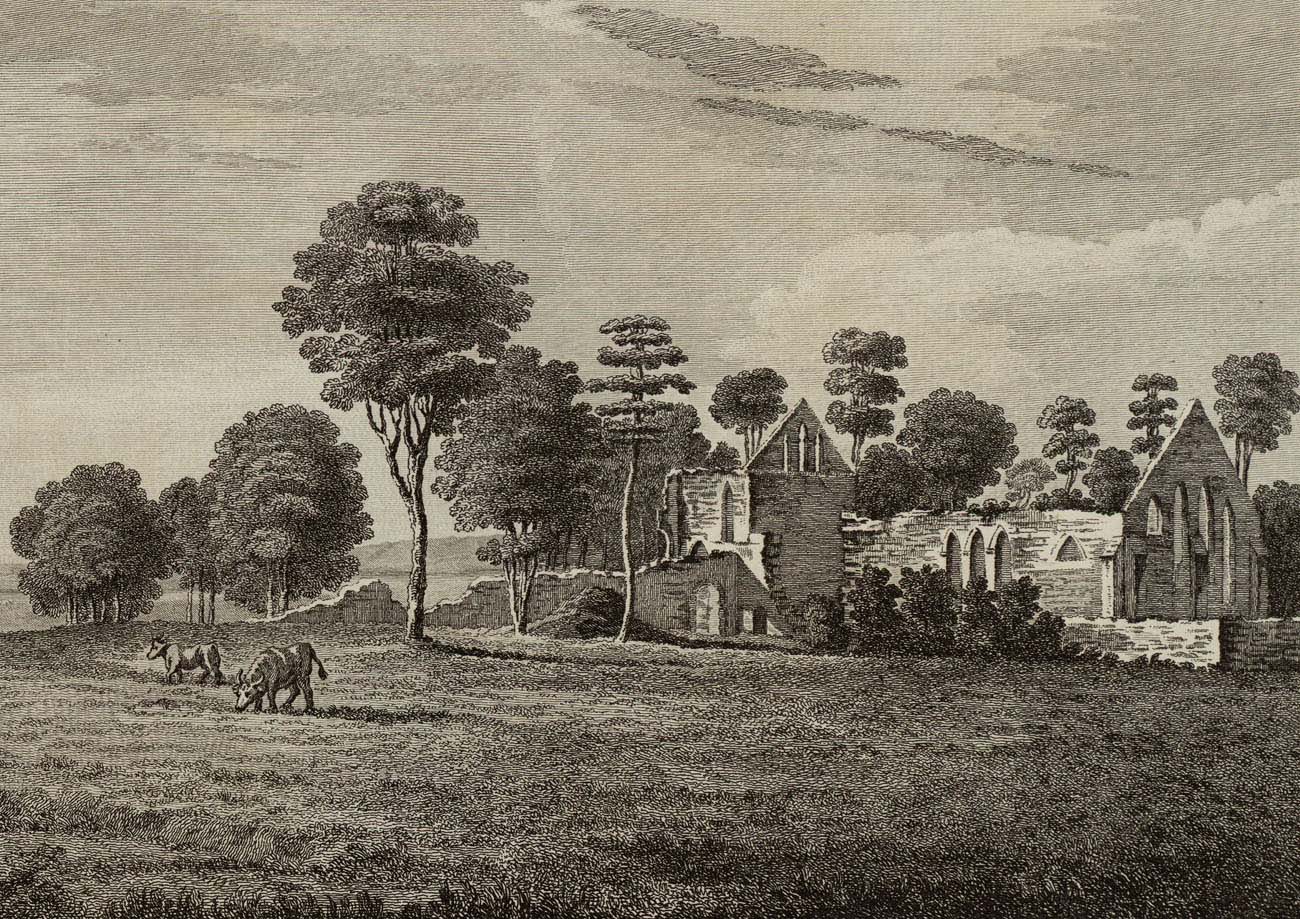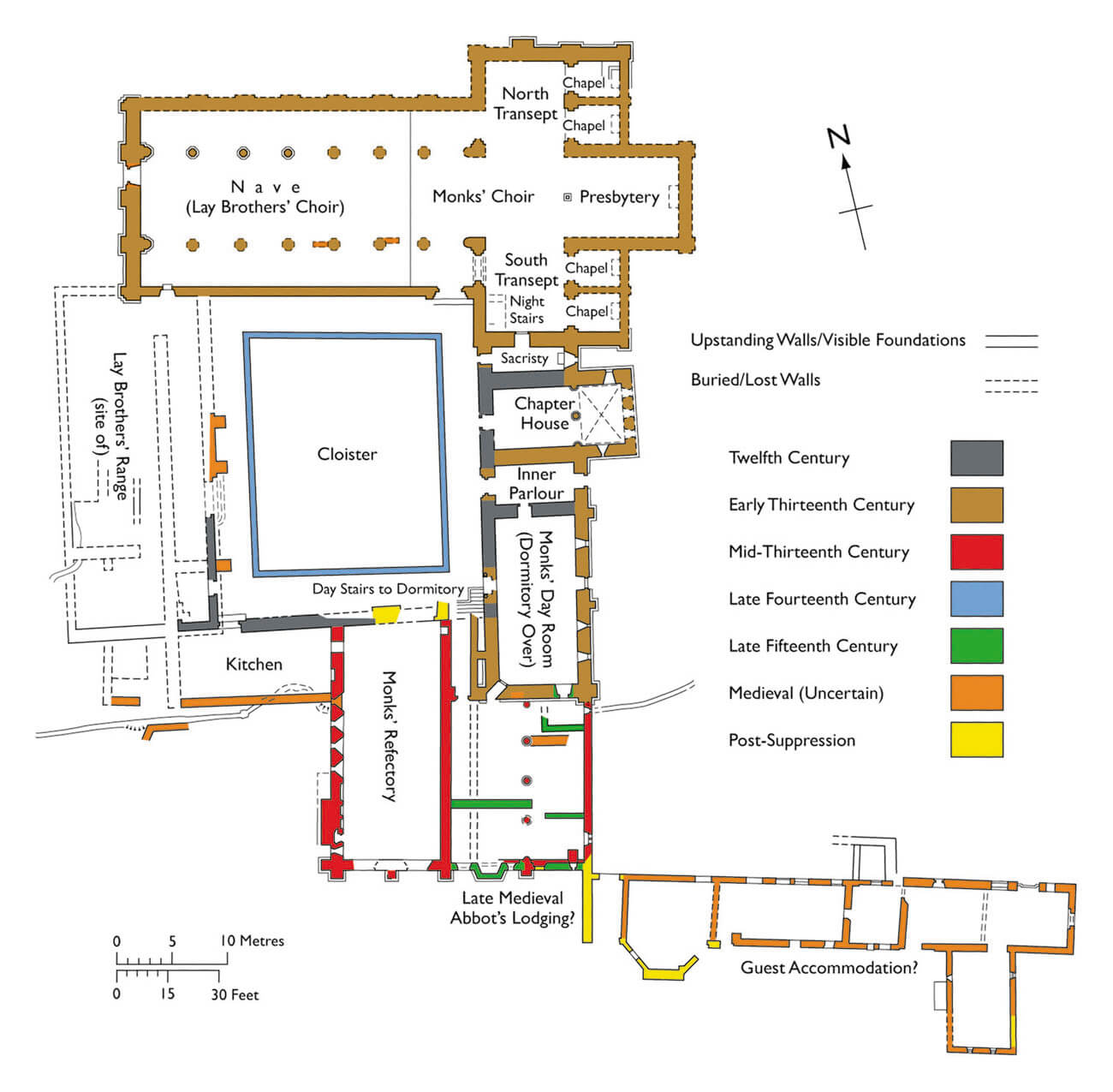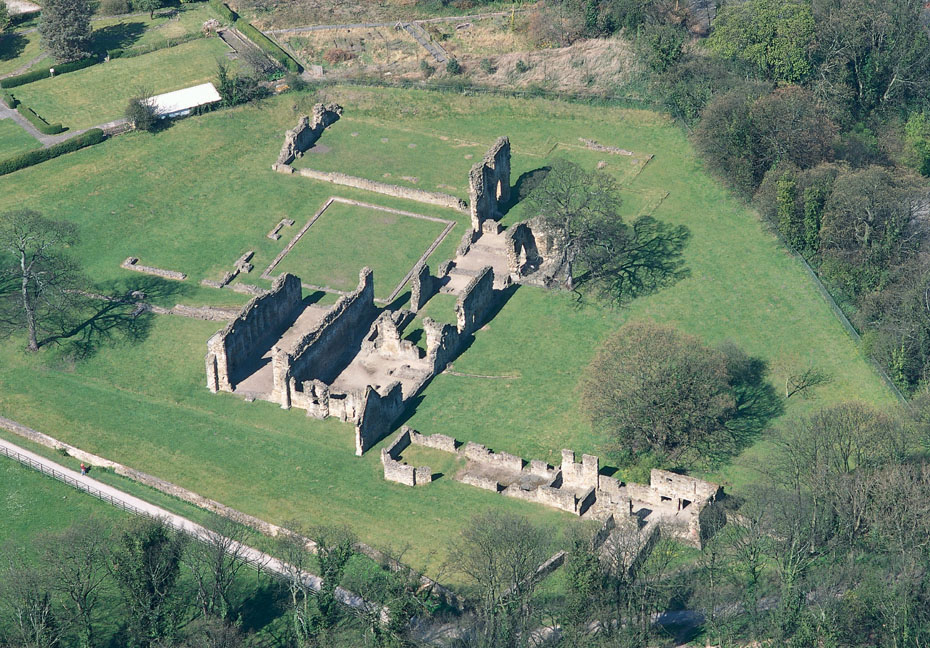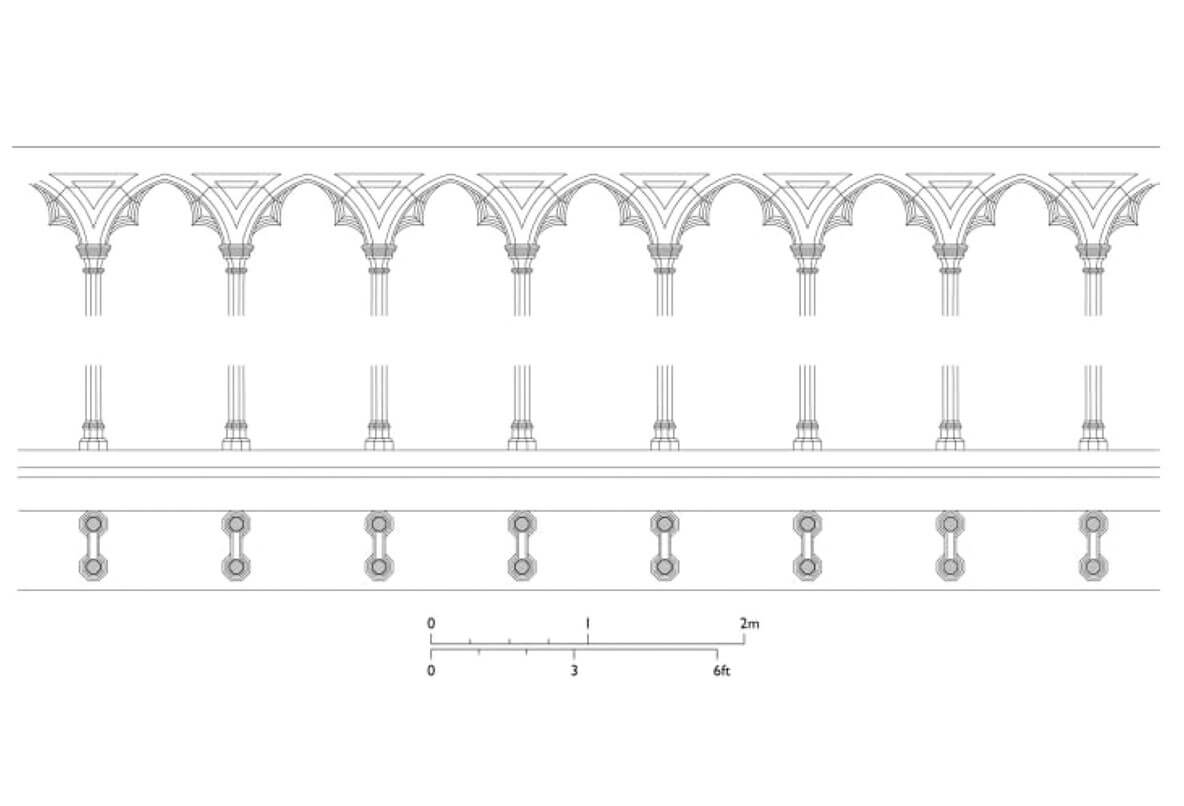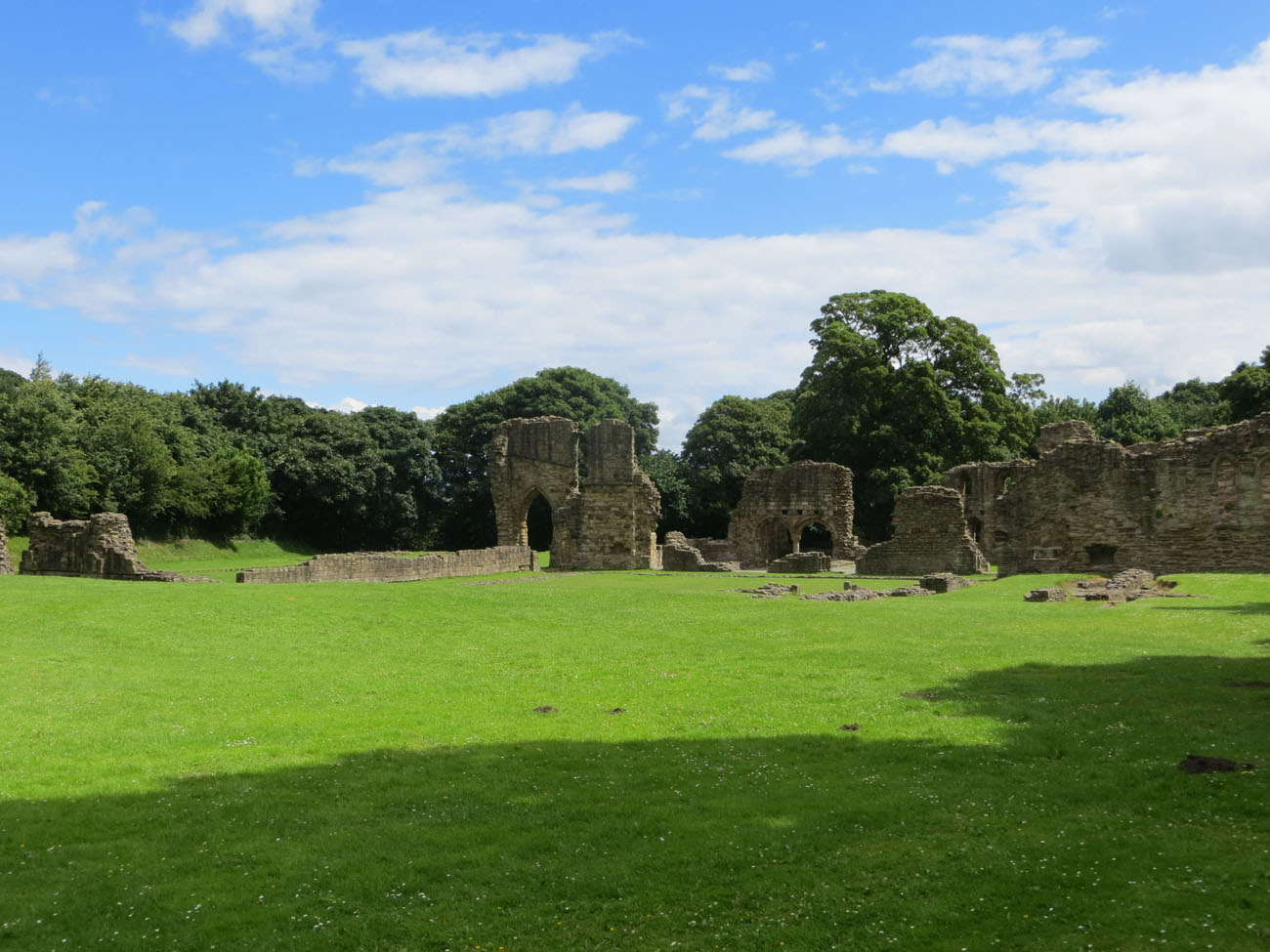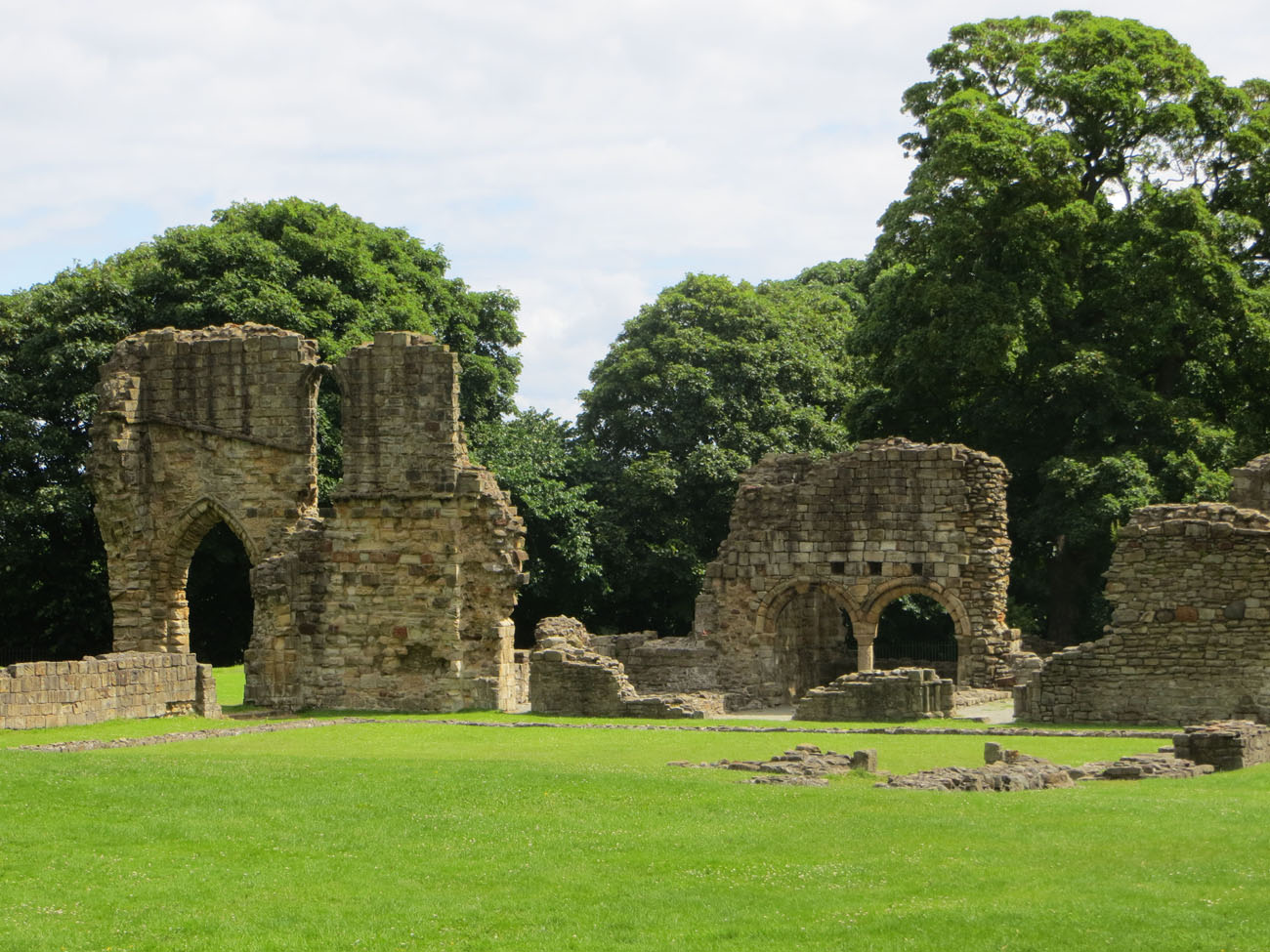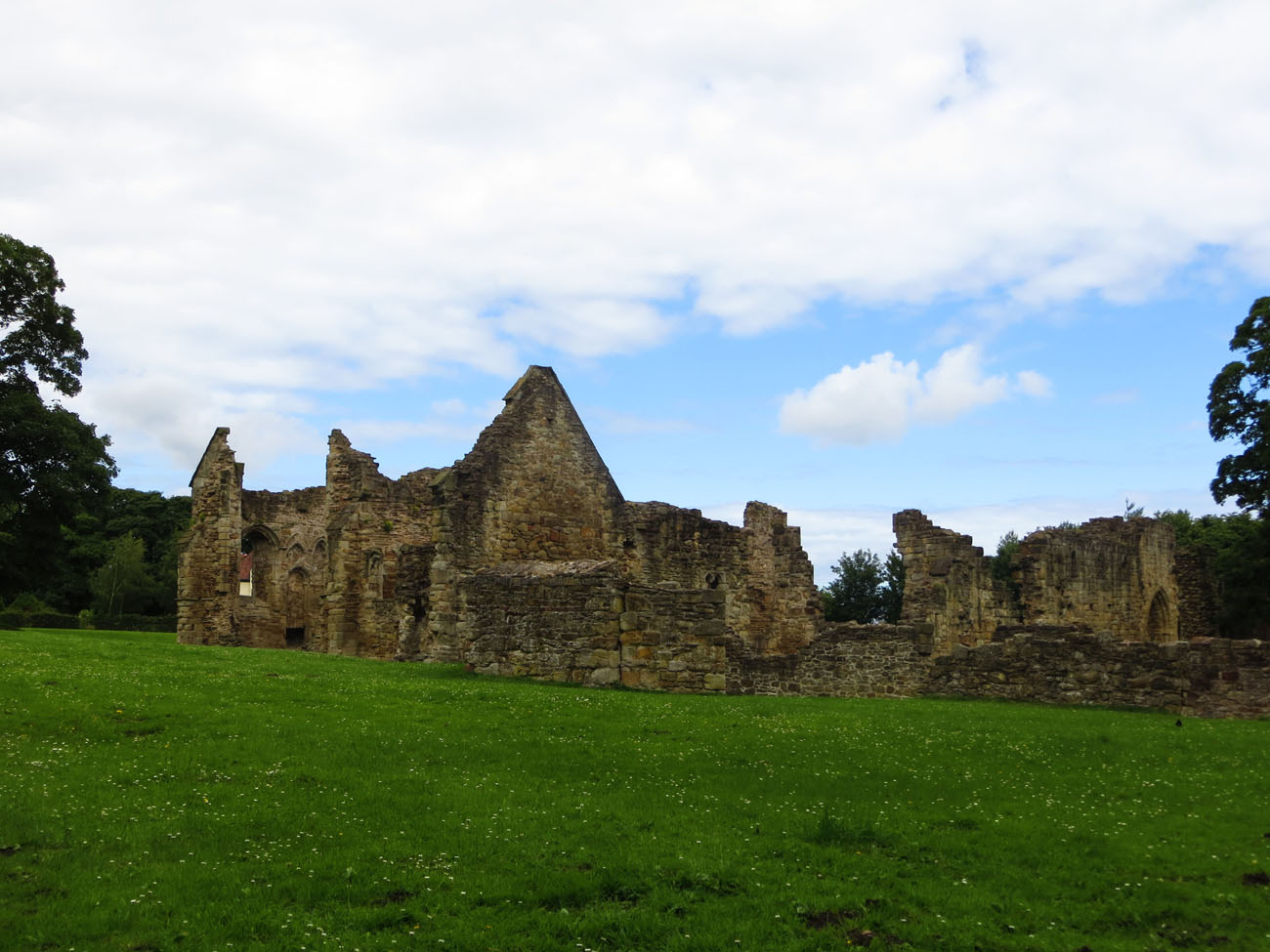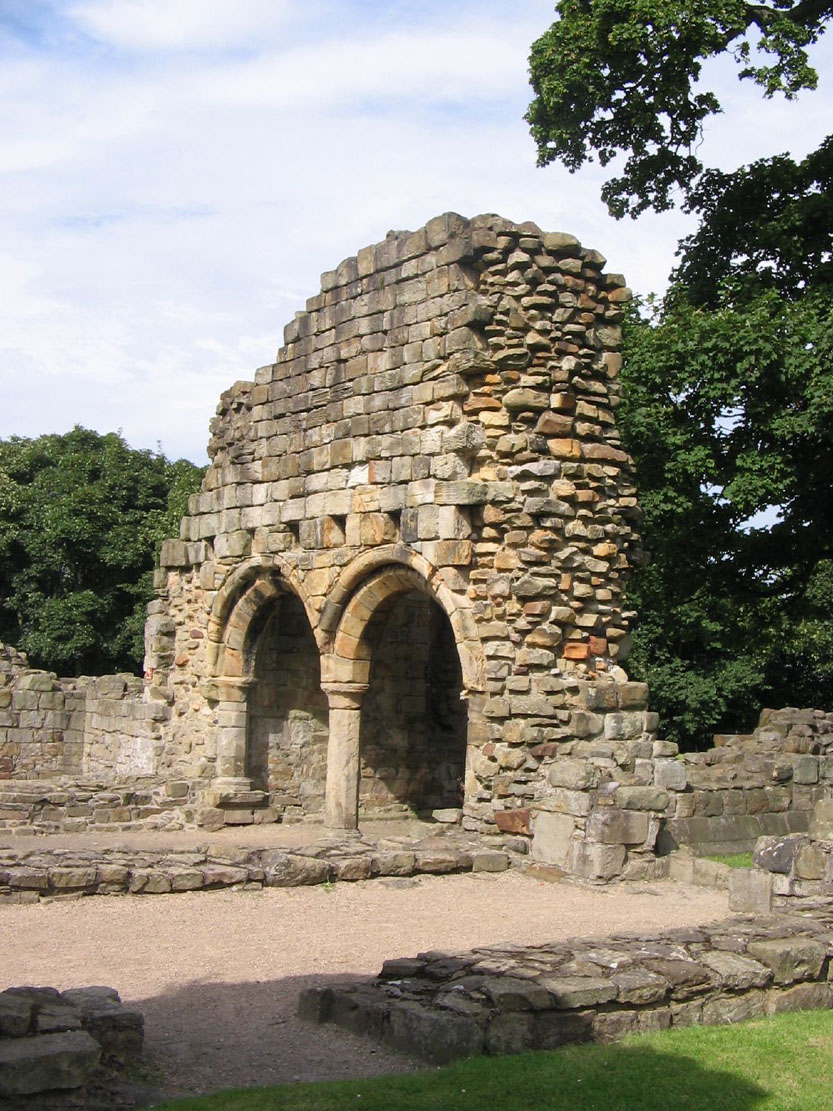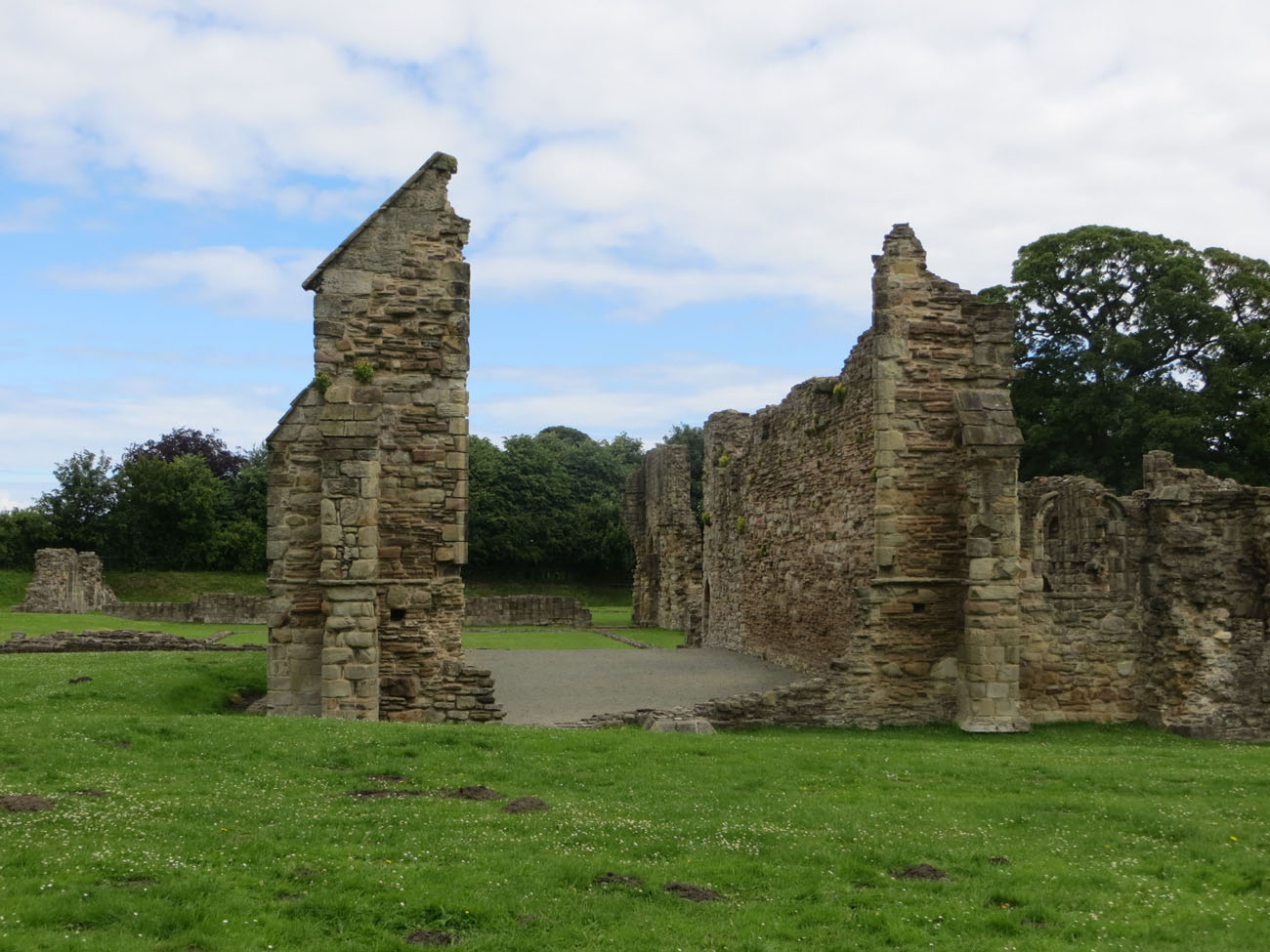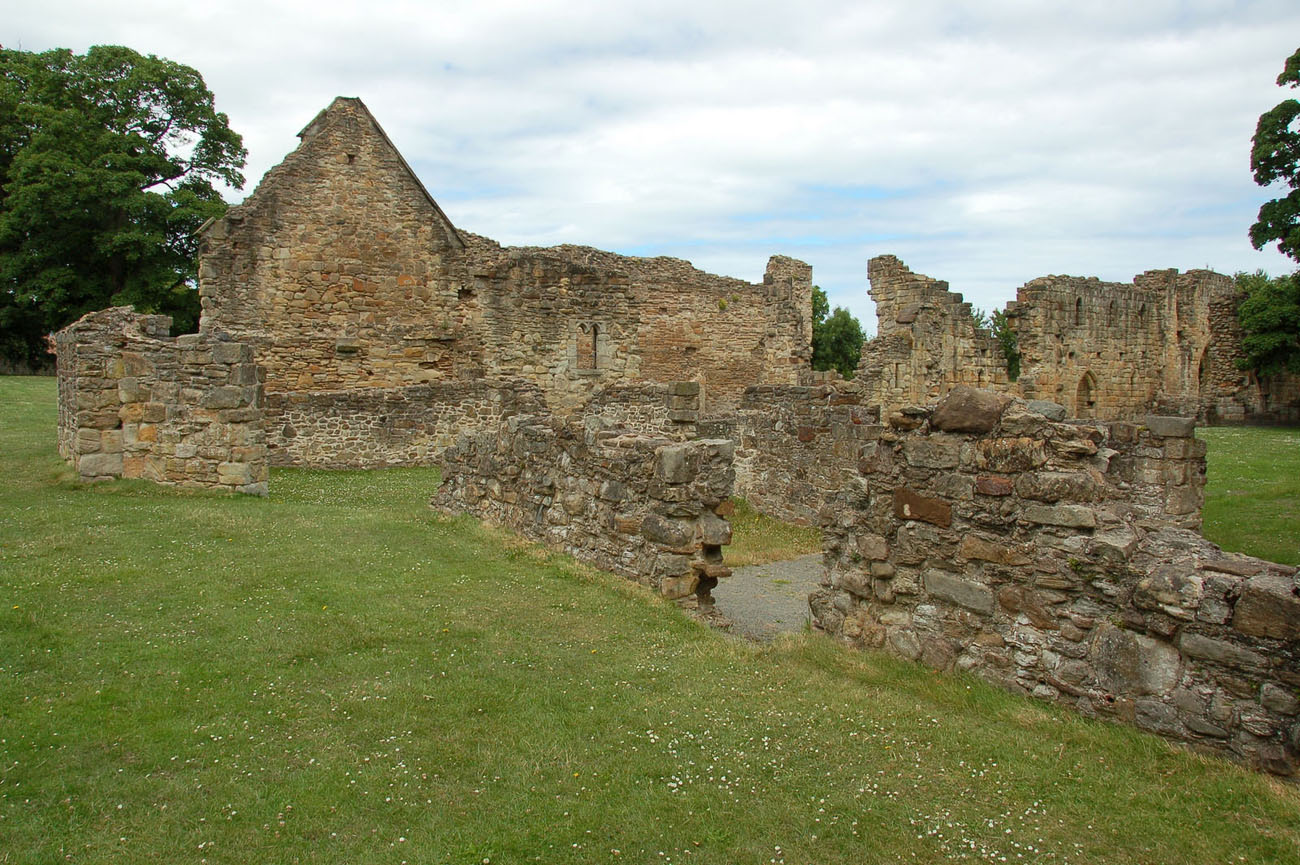Historia
Basingwerk Abbey was founded in 1132 by Ranulf de Gernon, the fourth Earl of Chester, who brought the Benedictines from the Savigny monastery in southern Normandy. The abbey became part of the Cistercian order in 1147, when the brothers of Savigny merged with the convent of Cîteaux. Ten years later, at the initiative of King Henry II the Buildwas Abbey in Shropshire received headship over the monastery, thanks to which the Welsh Cistercians received significant salaries, including lands in the English county of Derbyshire. In the same year, Henry II founded the Welsh abbey again, and the monks moved from Hen Blas to Basingwerk, in a place now called Greenfield.
In 1157, Owain Gwynedd encamped with his army at Basingwerk before facing the forces of Henry II at the Battle of Ewloe. The Welsh prince stayed in the abbey because of its strategic importance, blocking the route that Henry II had to overcome. In the fights that followed, Owain crashed the English near Ewloe. In 1188, Gerald of Wales, a monk, chronicler, linguist and writer visited the abbey, traveling through Wales with the Archbishop of Canterbury to gather support for the crusade to the Holy Land. He described Basingwerk as a small, unremarkable convent.
In the first half of the thirteenth century, the abbey was under the patronage of Llywelyn the Great, Prince of Gwynedd. His son Dafydd ap Llywelyn gave the monastery the Well of St. Winefrid with the pilgrimage chapel, and the monks used the Holywell stream to run the mill and process wool from their sheep. Later, they benefited greatly from the pilgrimage movement. Even King Henry V came here on foot in 1416, who made a pilgrimage from Shrewsbury to Holywell, while in 1461 another ruler, Edward VI, paid a visit.
In the 70s and 80s of the 13th century the abbey suffered heavy losses during the Welsh – English wars. In 1284, King Edward gave a compensation of £ 100 for this reason, although the revenues of the devastated monastery were low at the end of the 13th century. The situation was improved by permits obtained from the English kings for weekly markets and yearly fairs. The king also favored Basingwerk by inviting the abbots to parliamentary sessions in London. It was one of only four Welsh convents that were honored in this way, although in the fourteenth century it was often in debt.
In the fifteenth century, there were disputes in Basingwerk about the appointment of the abbots. In 1430, the monastery was occupied by the Henry Wirral, a self-appointed abbot in conflict with Richard Lee, supported by the court. He ruled until 1454, when was arrested for various offenses, but soon another dispute about the abbacy flared up between Richard Kirby and Edmund Thornbar. Although the latter received the support of the general chapter, Richard held office until 1476. Calming of the situation was brought only by the rule of Abbot Thomas Pennant in the years 1481 – 1523, adored by the bards for generosity and high education.
In 1536, during the reign of Henry VIII, the convent was dissolved and its lands were granted to secular owners. Some buildings were demolished to repair Holt Castle, and some items were taken to Ireland for use in the Dublin Castle. Eventually, Basingwerk Abbey fell into ruin and was almost completely demolished.
Architektura
The plan of the abbey from the thirteenth century was in line with the rule of the Cistercian Order. The main building was a church on a cruciform plan, orientated on the east-west line. In the south, the monastery buildings were spread around the three sides of a large garth measuring 28×23.7 meters surrounded by cloisters. The monks’ infirmary, guest rooms and other buildings related to the everyday life and economy of the abbey were further away.
The first to be built was the church and the eastern part of the abbey buildings. The temple was about 50 meters long, which placed it among the smallest Cistercian churches in Wales. It was a basilica with central nave and two aisles, seven bays in the nave, with transept enlarged from the east by two pairs of four-sided chapels and with a short rectangular chancel. The main entrance to the church was located in the west façade, atypically not on the axis, but shifted to the north, between the second and third lesenes. Traditionally, the southern aisle was connected by two portals with a cloister. The western one was smaller and probably less ornate. It was used mainly by lay brothers occupying the west wing, while the larger, stepped eastern portal was used by monks. In addition, the eastern range was connected to the transept, both on the first floor and on the ground floor.
The southern transept was adjacent to a narrow sacristy (only 1.8 meters wide) behind which the chapter house was located in the ground floor of the east wing, initially in the shape of a square. At the beginning of the 13th century it was rebuilt and extended eastwards by an additional bay. East part of chapter house was separated by two arcades supported in the middle on a single pillar and crowned with a rib vault. On the south side of the chapter house there was a narrow room called parlour, that is, a place where brothers could talk freely without fear of breaking vows. The range was ended with a day room for monks, above which was a dormitory on the first floor, 19.5 meters long. A typical solution was to connect the bedroom through the so-called night stairs with the church’s south transept to allow monks to quickly reach night masses.
In the mid-13th century a refectory was built in the south wing, located on the north-south axis, dimensions of 20.1 x 8.2 meters. Its projecting south beyond the outline of the monastery buildings was a typical feature of Cistercian abbeys, as well as neighboring with the kitchen on the west side. The refectory lighting was provided by a large pointed window from the south and a few lancet windows in the western wall. In the latter, in the thickening of the wall, there was also a pulpit for a monk reading during meals. The west wing was probably occupied by lay brothers who had their refectory and dormitory there.
In the fourteenth century, new Gothic arcades of the cloisters were created, and the buildings on the south-east side were enlarged. This southern end of the east range was rebuilt again at the end of the Middle Ages. Most likely it was used for economic purposes, there could also be latrines. The arcades of the cloister were pointed, topped with trefoils and supported by pairs of octagonal shafts, which were probably connected by a network of thin masonry (they were very similar to the cloisters in the nearby Valle Crucis). At the end of the 15th century, the abbey was also roofed with lead and decorated with glass windows, and new rooms were built for guests on the south-east side.
Stan obecny
To this day, the building of the 13th-century refectory with ogival windows has survived in the best condition, as well as the western wall of the southern church’s transept, fragments of the east wing and rooms for the monastery guests on the south-east side. The abbey ruins are currently under the protection of the Cadw government agenda, which makes them available for visitors. During the dissolution of the abbey, some of its furnishings and some architectural elements were to be transferred to the neighboring parish churches. Among other things, the impressive late-medieval roof truss can be found today in the church in Cilcain.
bibliography:
Burton J., Stöber K., Abbeys and Priories of Medieval Wales, Chippenham 2015.
Harrison S., Robinson D.M., Cistercian Cloisters in England and Wales Part I: Essay, “Journal of the British Archaeological Association”, 159 (2006).
Salter M., Abbeys, priories and cathedrals od Wales, Malvern 2012.
The Royal Commission on The Ancient and Historical Monuments and Constructions in Wales and Monmouthshire. An Inventory of the Ancient and Historical Monuments in Wales and Monmouthshire, II County of Flint, London 1912.

